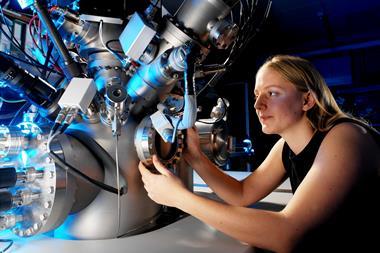X-ray studies reveal molten phosphorus existing in two different density states
The widely accepted dictum that matter exists in three phases - solid, liquid and gas - and cycles through these states following phase transitions triggered by changes in pressure or temperature may be up for an overhaul.
Japanese researchers have found that molten phosphorus can adopt two distinct liquid states, confirming growing suspicion that liquids might be able to adopt more than one state.
The nature of liquids is different to that of solids or gases. In solids, molecules are tightly packed and well ordered, while in gases they are free to wander independently. But liquids are a bit of an in-between state, comprising closely connected molecules that have no overall order or structure, so their properties are not as strictly regulated as for solids or gases, or as well understood.
The researchers from the Atomic Energy Research Institute and the Synchrotron Radiation Research Institute, both in Hyogo, suspected that they had already observed liquid phosphorus adopting two distinct states in previous research, but their results were generally considered inconclusive. So they used x-ray radiography to study in detail what happens when a sample of red amorphous phosphorus is heated to 1000?C and pressurised to one gigapascal.
As in their previous research, the researchers observed small, dark round drops, which they termed high-density liquid phosphorus (HDLP), form within the bulk molten phosphorus, which they termed low-density fluid phosphorus (LDFP). For definitive proof that these represent two distinct liquid states, the researchers needed to demonstrate that LDFP and HDLP undergo a macroscopic phase separation. This they did by monitoring the x-ray diffraction patterns for LDFP and HDLP, which clearly showed that they coexist, have different densities and separate macroscopically.
The goal now is to understand more about these two liquid states, such as the critical nature of the phase transition between them.
Jon Evans
References
Y Katayama et al, Science, 2004, 306, 848






No comments yet